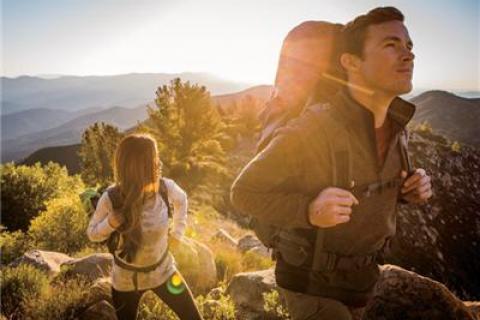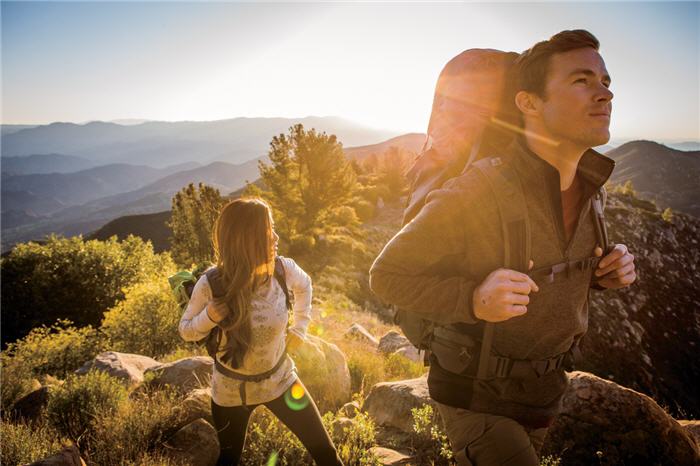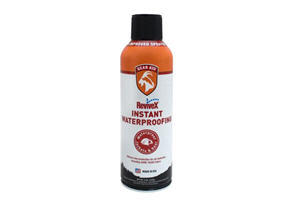
The idea of hiking or backpacking in the cold can be daunting, as the wind can be biting, the snow can be deep and working up a sweat on your hike can result in feeling chilled to the bone once you stop moving to rest.

But the potential to be uncomfortable doesn’t mean you should avoid cold-weather outdoor activities altogether. With the right weather forecast and corresponding gear, you can stay comfortable and take in the beauty and solitude of the frozen outdoors that a select few get to experience.
General Hiking Safety Tips:
- Don’t travel alone. Yes, there are exceptions. If you’re going to a well traveled area, there is less need for a travel companion. But if you’re planning to hike through a heavily forested area with canyons and winding trails, you can easily get lost. Hikers in pairs are less likely to panic and he or she can help if you’re injured.
- Know where you’re going. Planning where you are going to hike is a must. Let someone know your destination and time table. Mark up a map of your route and give an estimated time of when you’ll be back.
- Know when to stop and go back. If you are unsure about a trail, a climb or the weather, turn back or take a safer route. Hikers can fall victim to challenging situations because of their own stubbornness to heed their own instincts.
- Eat and drink regularly. Undress if you get overheated and dress warmer before you chill.
Check out this list of hiking gear that will help you keep warm:
- Wicking synthetic base layering.Wearing synthetic -- not cotton! -- undergarments and long underwear will pull moisture away from your body, which lets your body heat itself more easily in the cold. Base Layers for men at Bass Pro Shops here. Or, shop base layers for ladies at Bass Pro Shops here.
- Socks, socks, socks. You’ll want to bring along extra socks on any hiking excursion, and this is especially true during cold weather, when you may wear two or three pairs at a time. Wearing a thin, synthetic sock as your innermost layer can pull moisture away from the foot, and adding wool socks on top of that can help further insulate.
- Insulating layer. A thick wool or fleece insulating layer will keep your body heat from escaping so you can stay warm.
- A
waterproof, windproof outer layer. This layer is meant to protect you from the outer elements -- wind, rain, snow and so forth. For hiking, it’s best to choose breathable waterproof garments like those made from Gore-Tex fabrics. While this gear may be more expensive than the gear made with non-breathable, plastic-like materials, breathable rain gear is more versatile and is appropriate for moderate- to high-energy activities.
ReviveX® Air Dry Waterproofing Spray - Hats, scarves & gloves. In addition to your feet, you’ll also need to protect your other extremities like your hands, neck and head. Hats, scarves and gloves made from fleece, wool or synthetic fabrics are best.
- Sturdy, waterproofed boots. Choose a pair of waterproof boots, and make sure to size up so you are able to wear multiple pairs of socks. Between outdoors trips, apply additional waterproofing treatments, such as ReviveX® Air Dry Waterproofing Spray, to keep the waterproofing effect going strong.
- Gaiters. These will keep your boots from getting flooded with snow.
-
Non-clothing items. This includes items such as food, water, a whistle, a small first aid kit, GPS, matches, flashlight/headlamp, batteries, hand warmers, sunglasses, sunscreen and lip balm.
HeatMax HotHands Self-Activating Hand Warmers - A pack. Choose a lightweight, waterproof backpack with a capacity large enough to bring along all the extra gear you need -- and keep it dry.
Keep in mind that you should bring duplicates of the items above -- more than you think you’ll need -- in case any of your gear happens to get wet. The last thing you want is to wear a sopping hat or damp gloves throughout the whole hike.
Happy hiking!
- 7778 views



